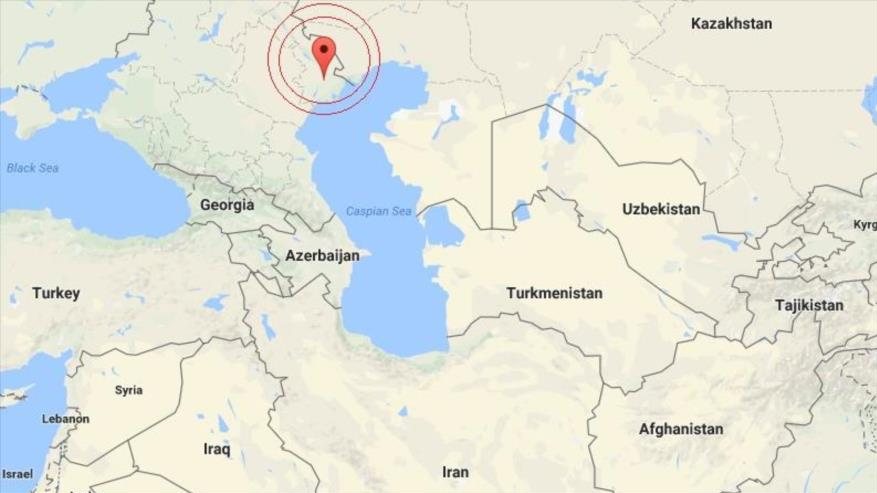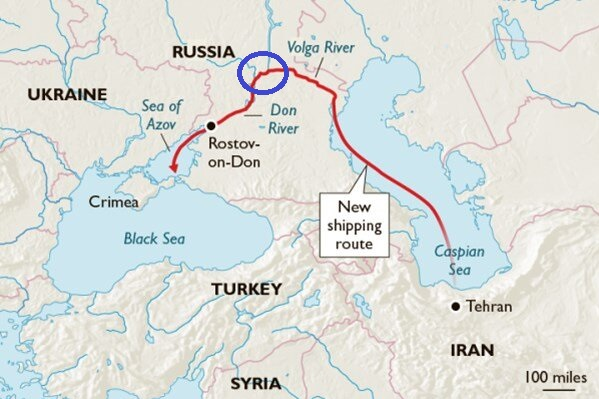The port of Salyanka is a gateway for the export of Iranian products to the Russian market

According to the economic correspondent of Fars News Agency, the first transit shipment from Russia to India through Iran started from the north-south corridor last week. The consignment, consisting of two 40-foot containers containing 41 tons of wood laminate, will be sent on a trial basis from St. Petersburg, Russia, and will be transported to Iran via the Caspian Sea after being transferred to the “Salianka Port” in Astrakhan.
After entering the Anzali Free Zone in Iran, this double container is transported to Bandar Abbas by truck and from there it is transported by container ships to the port of Navashiva in India, which is the final destination.
The transit time forecast for this shipment is less than 25 days, which saves more than 30% of the time compared to the Suez Canal route. Figure 1 shows the communication route between Russia and India through the North-South corridor.
Figure 1- North to south transit corridor
In the meantime, a significant issue, especially for Iran, “Port of Salyanka” And why it is important that this report addresses its status and characteristics.
* 53% ownership of Iran from the Russian port of Salyanka
The port of Salyanka is located in the economic zone of Astrakhan province and the Islamic Republic of Iran owns 53% of it. The port city of Astrakhan is located 50 km north of the Caspian Sea in Russia and is connected to the Caspian Sea via the Volga River (Figure 2).

Figure 2
According to official statistics from the Astrakhan local government, the port of Salyanka was ranked first among the 15 active ports on the Volga River in 2020, both in terms of cargo tonnage and number of berths. The port of Salianka, which owns more than 53% of the shares in the shipping of the Islamic Republic of Iran, in 2020, with about 670 thousand tons of unloading and loading, has become the top port in this regard in the region.
Amin Azami, an economist, in an interview with Fars News Agency’s economic correspondent, says about the infrastructure and export and import capacities of Salianka port: “There is a 750-meter-long wharf in this port, and 5 ships can load and unload at the same time.” The port has a capacity of more than half a million tons of loading and unloading during a year, and based on ongoing investments, this amount is expected to reach more than 0.7 million tons per year.
He added: “Other features and advantages of the port of Salianka include 4,000 meters of railway line, including six railway tracks, grain transport wagons, warehouses and various silos.”
Azami said that the type of Russian exports from this port to Iran often includes grains, wood, oil and oilseeds, corn, red meat and equipment and parts. Fruits and nuts, vegetables, cement, processed food products, textiles and ceramics are also products that are imported to Iran from Iran through this port.
* Salyanka port is a gateway for Iran to enter the Russian market
Due to its geographical location on the territory of Russia and the North Caspian Sea, the port of Salyanka can play a very important role in the development and strengthening of the North-South corridor.
This port is also located at the end of the Great Volga River, which with 80% of the volume of water entering the Caspian Sea is the only navigable waterway in the territorial regions of Russia, which uses the “Volga-Dan” canal (Figure 3) to communicate directly with the waters. Enables free. All this makes it necessary to increase the capacity of this port, which also plays an important role in the exchange of goods between Iran and Russia.

Figure 3
But the issue that needs to be considered is the use of the port of Salyanka as a gateway to enter the Russian market and the export center of Iranian products. Unfortunately, the capacity and infrastructure of this port is such that it is mostly used to import products from Russia to Iran, and its share is very small compared to other Iranian export destinations to Russia.
* Iran’s opportunity to play a role in India-Russia trade
The port of Salyanka is also important for Iran in terms of the role of the North-South corridor and trade interactions between India and Russia. India’s latest official statistics show that in the first month of Russian sanctions (March), India’s exports fell by 70%, but its imports more than doubled. The reason for the rise in imports is due to the jump in Indian oil purchases from Russia, which has increased from 30,000 barrels per day to more than 700,000 barrels.
On the other hand, last year, the total trade between Russia and India was $ 13.5 billion, which was done through the Suez Canal sea routes without using Iranian territory.
Due to the significant increase in Russian oil exports to India, Indian products and goods will gradually open their place in the Russian market and India’s export routes to Russia will become doubly important.
In this regard, the most important transportation route for Russian-Indian interactions is the North-South corridor, and in this route, the northern ports of Iran and the southern Russian ports in the Caspian Sea, especially the port of Salyanka, will become the main transit and transportation bases.
All these events indicate that in addition to increasing the capacity and using the port of Salyanka to export products to Russia, this port must be equipped for import to Russia from other countries because it will not only be an effective factor in our country’s exports to Russia but also It will also play a significant role in activating the North-South corridor, which has recently doubled in importance due to developments in Ukraine.
The governments of India and Russia signed a memorandum of understanding in 1397 to facilitate and accelerate the implementation of the North-South International Corridor through Iran, but Iran’s railways from Chabahar to Zahedan and Rasht to Astara have not yet been completed, and this exceptional opportunity in The transit area of our country has been suspended.
End of message /
You can edit this post
Suggest this for the front page

